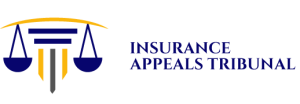It’s nice to see that they’re meeting high security standards, which is reassuring for anyone looking to use the platform. The challenge of staying decentralized while complying with regulations is indeed a tough one, but GRVT seems to be up for it. The exchange is working with specialized KYC providers, engaging with regulators, and employing risk-based compliance—the mix is intriguing. The reality that they have been granted regulatory approval in Bermuda makes it a tangible example of a possible way to strike the balance.
BlockDAG: Can It Be a Sustainable Solution for Crypto Mining?
Cryptocurrency is no longer a niche market; it’s a major player in today’s financial systems, with Bitcoin and Ethereum at the forefront. However, we can’t overlook the rise of meme coins like Dogecoin and Cutoshi. These coins have carved out their own spaces, often propelled by community spirit and cultural moments.
- This means that GRVT can handle transactions off-chain but still verify them on the Ethereum blockchain.
- One of the primary hurdles Bitcoin has faced is its limited scalability and high fees.
- This means projects already developed on Ethereum can migrate to the Bitcoin network without a hitch.
Astherus is a multi-asset liquidity hub aimed at optimizing the real yield of crypto assets. It operates as a DAO, allowing users to set up their own DAOs and manage member participation. It aims to create a fair and effective system for decentralized finance (DeFi) governance.
- They’ve had a thorough audit done by SolidProof, a German blockchain security firm that specializes in smart contract verification.
- According to the article, BlockDAG raised nearly $150 million during its presale and distributed over 16.4 billion coins.
- They also have something called a “hybrid proof-of-work consensus mechanism”, which they claim is secure against attacks.
- The article mentions that media coverage can swing public opinion dramatically, which is spot-on.
- This kind of regulatory approval is a rarity in the space, yet GRVT has managed to blend compliance and decentralization.
Hybrid Exchange Platforms
It’s hard to deny that Elon Musk holds considerable sway over the crypto markets. His endorsements can send prices soaring; just look back at early 2021 when his tweets about Dogecoin caused its price to skyrocket multiple times. This space is built to help you, whether you’re a beginner or an expert using our app.
Navigating Challenges: Regulatory Compliance
One of the primary hurdles Bitcoin has faced is its limited scalability and high fees. By processing transactions off the main chain, it aims to cut down on congestion, resulting in faster transactions and cheaper fees. Think about it—this could attract a variety of industries, especially those in decentralized finance (DeFi), non-fungible tokens (NFTs), and even AI.
What is a Cryptocurrency Exchange Platform?
Its high transaction throughput and decentralized consensus make it a formidable competitor. However, BlockDAG’s unique DAG design and hybrid PoW mechanism offer a different path to scalability and decentralization. Ethereum stands as a well-known platform in the decentralized finance (DeFi) sphere. However, its current scalability issues and high transaction fees present challenges. What sets Cutoshi apart is its utility; it features a multi-chain decentralized exchange (DEX) that allows users to swap assets seamlessly across blockchains. AstherusEarn is integral to the platform’s strategy of delivering superior yields through CeDeFi solutions.
Testnet and Features
With a user base nearing 30,000 KYC-verified accounts, it certainly seems to have captured the attention of the market. Features like gas-free cross-chain transactions have made it attractive to both users and institutions. Avalanche is another leading cryptocurrency platform emphasizing scalability through its multi-chain framework.
It capitalizes on a mix of CeFi security and DeFi accessibility to boost returns across multiple assets. Through AstherusEarn, users can take part in various activities like stablecoin yield farming and derivatives trading. The benefits of such a combination include improved security measures, compliance with regulations, and a user-friendly experience.
While many DEXs continue to enjoy the freedom of operating in a legal grey area, GRVT’s path is distinctly different. The regulatory framework it has adopted allows for operation within known boundaries. GRVT has even announced plans to hybrid workplace model guide step up to a Full Class Licence under the Bermuda Digital Asset Business Act (DABA) by mid-2025, moving beyond a sandbox setup. Traditional PoW systems have faced criticism for their energy consumption, but BlockDAG’s hybrid PoW model reduces energy stress on mining devices. This makes it more accessible and potentially more environmentally friendly, addressing one of the main critiques of crypto mining. One thing that stands out about deXch is its focus on community governance through transparency.
How Does Astherus Connect CeFi and DeFi?
However, they may lack the liquidity and user-friendliness of centralized options. While other blockchains like Solana and Avalanche also achieve high TPS, Conflux’s approach is intriguing. It offers a competitive edge in regions where transaction volumes are high, though it faces challenges in terms of regulatory scrutiny and market acceptance. They’ve got a decentralized governance model that gives power to the users. Community members can propose changes, discuss recommendations, and even vote on significant decisions through their official Discord channel.
Launched in 2018, deXch has positioned itself as a different kind of exchange. While it may not be one of the giants like Binance or Coinbase, it has steadily built a reputation for transparency and innovation. The platform boasts over 250,000 active users across more than 70 countries, with an impressive annual trading volume of around $65 million USD as of 2023.
